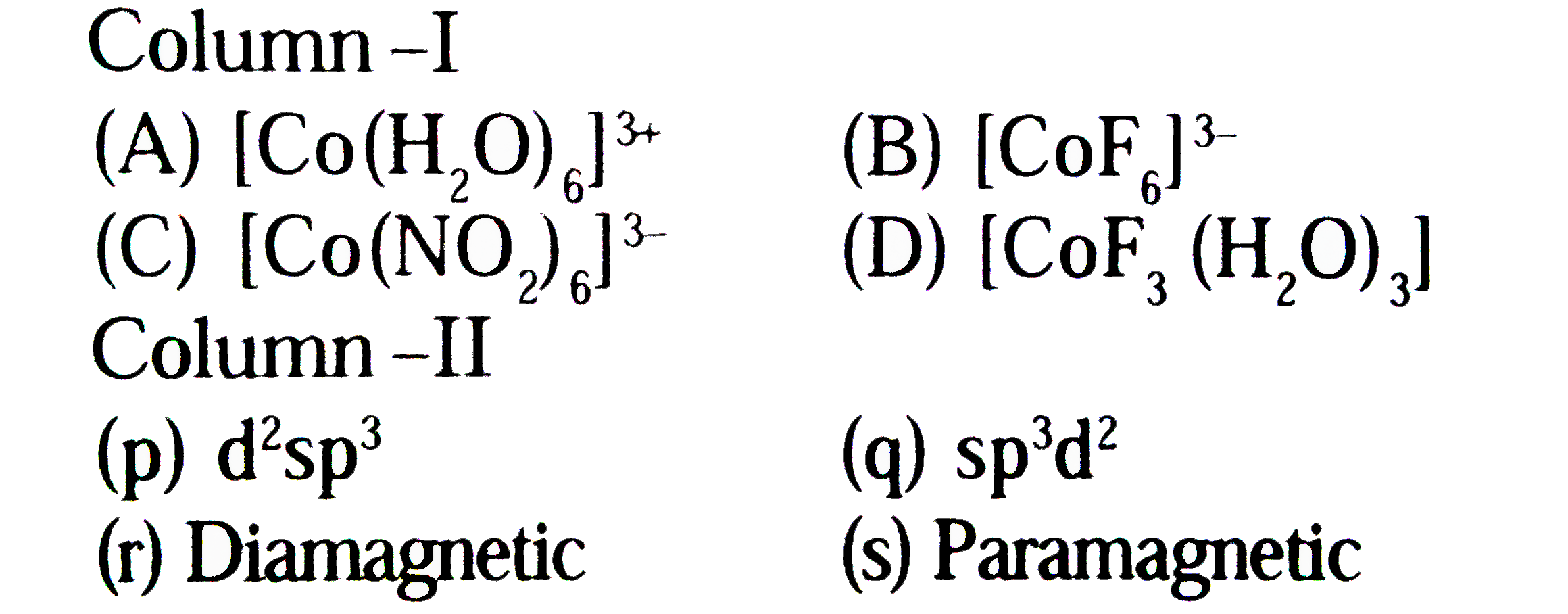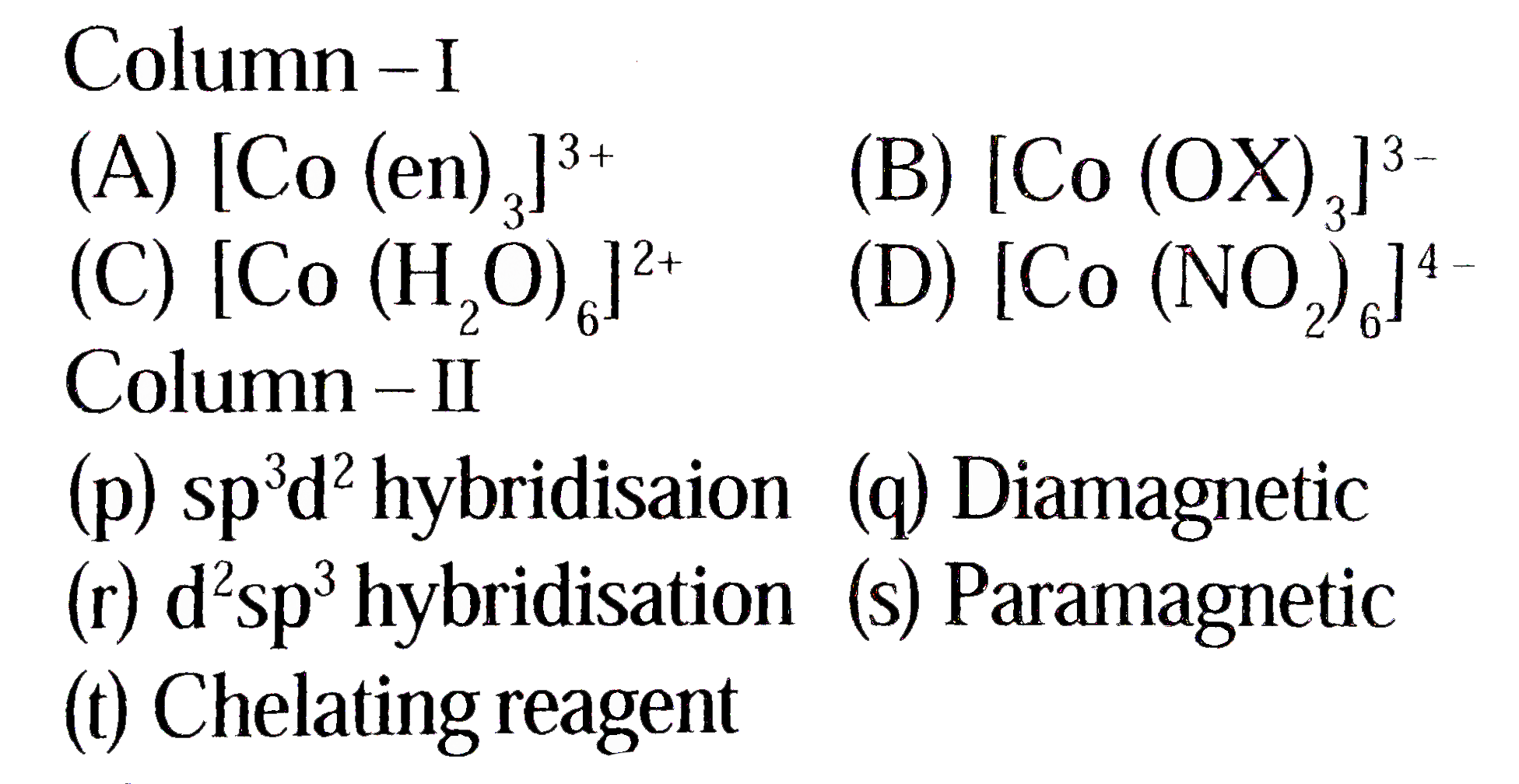Match the complexes in Column-I with characteristic(s)/ type of hybridisation listed in column-II

The correct Answer is:(A-q,r,t); (B-q,r,t): (C-p,s): (D-q,r)
(A) [Co(en)3]3+,Co3+ has d6 configuration which has higher CFSE, so hybridisation is d2sp3 and complex is diamagnetic 'en' is a bidentate chelate ligand.
(B) [Co(ox)3]3−,Co3+ has d6 configuration which has higher CFSE, so hybridisation is d2sp3 and complex is diamagnetic 'ox' is a bidentate chelate ligand.
( C) [co(H2O)6]2+,Co2+ has d7 configuration, H2O is weak field mondentated ligand, so it is paramagnetic with three unpaired electrons having sp3d2 hybridisation.
(D) [Co(NO2)6]3−,Co3+ has d6 configuration with has higher CFSE, so hybridisation is d2sp3 and complex is diamagnetic . 'NO2' is a monoentate ligands.
Topper's Solved these Questions
- BOOK - RESONANCECHAPTER - COORDINATION COMPOUNDSEXERCISE - Additional Problem for Self Practice (APSP) Part-III Single and double value integer type11videos
COORDINATION COMPOUNDS
- BOOK - RESONANCECHAPTER - COORDINATION COMPOUNDSEXERCISE - Additional Problem for Self Practice (APSP) Part-III One or more than one option correct type7videos
COORDINATION COMPOUNDS
- BOOK - RESONANCECHAPTER - COORDINATION COMPOUNDSEXERCISE - Additional Problem for Self Practice (APSP) Part-III Only one option correct type21videos
COORDINATION COMPOUNDS
- BOOK - RESONANCECHAPTER - CHEMISTRY IN EVERYDAY LIFEEXERCISE - ORGANIC CHEMISTRY(Chemistry in every day life)31videos
CHEMISTRY IN EVERYDAY LIFE
- BOOK - RESONANCECHAPTER - D & F BLOCK ELEMENTSEXERCISE - INORGANIC CHEMISTRY(d & f- Block Elments)40videos
D & F BLOCK ELEMENTS
Similar Questions
Knowledge Check
- Question 1 - Select One
Match the complexed listed column −I with type of hybridisation listed in column −II and select the correct answer using the code given below the lists :
Column−IColumn−II(a)[AuF4]−(p) dsp2hybridisation(b)[Cu(CN)4]3−(q) sp3hybridisation(c)[Co(NH3)6]3+(r) sp3d2hybridisation(d)[Fe(H2O)5NO]2+(s) d2sp3hybridisationA(a)(b)(c)(d)pqsrB(a)(b)(c)(d)psqrC(a)(b)(c)(d)qprsD(a)(b)(c)(d)sqpr
Match the complexes listed in column-I with characteristic (s)/type of hybridisation olisted in column-II.
 View Solution
View SolutionMatch the compounds listed in column-I with characteristic type of reaction listed in column-II
 View Solution
View SolutionMatch the complexes listed in column-I with characteristic(s) listed in column-II.
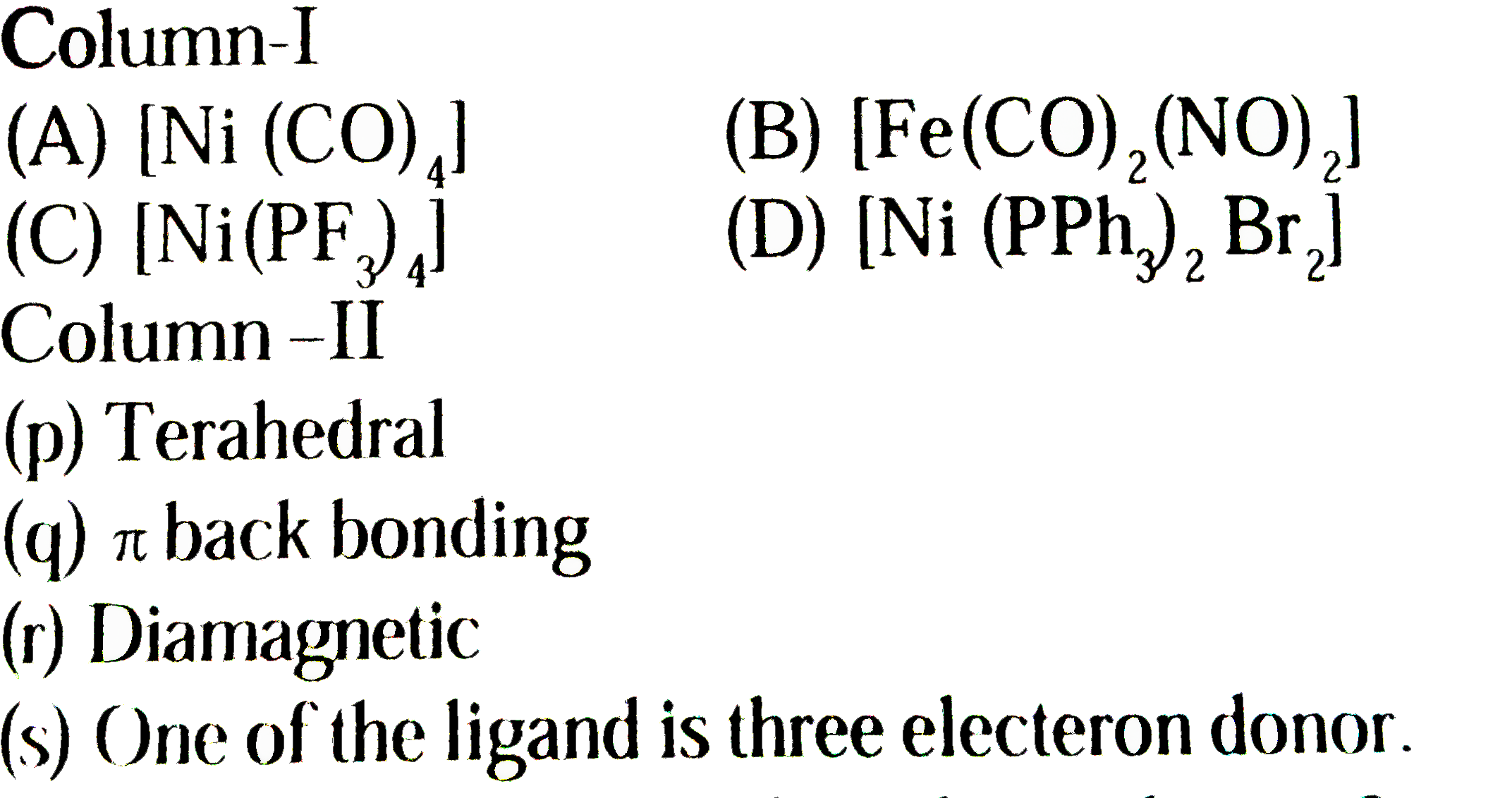 View Solution
View SolutionMatch the reactions listed in column-I with the characteristic (s) of the products listed in column-II.
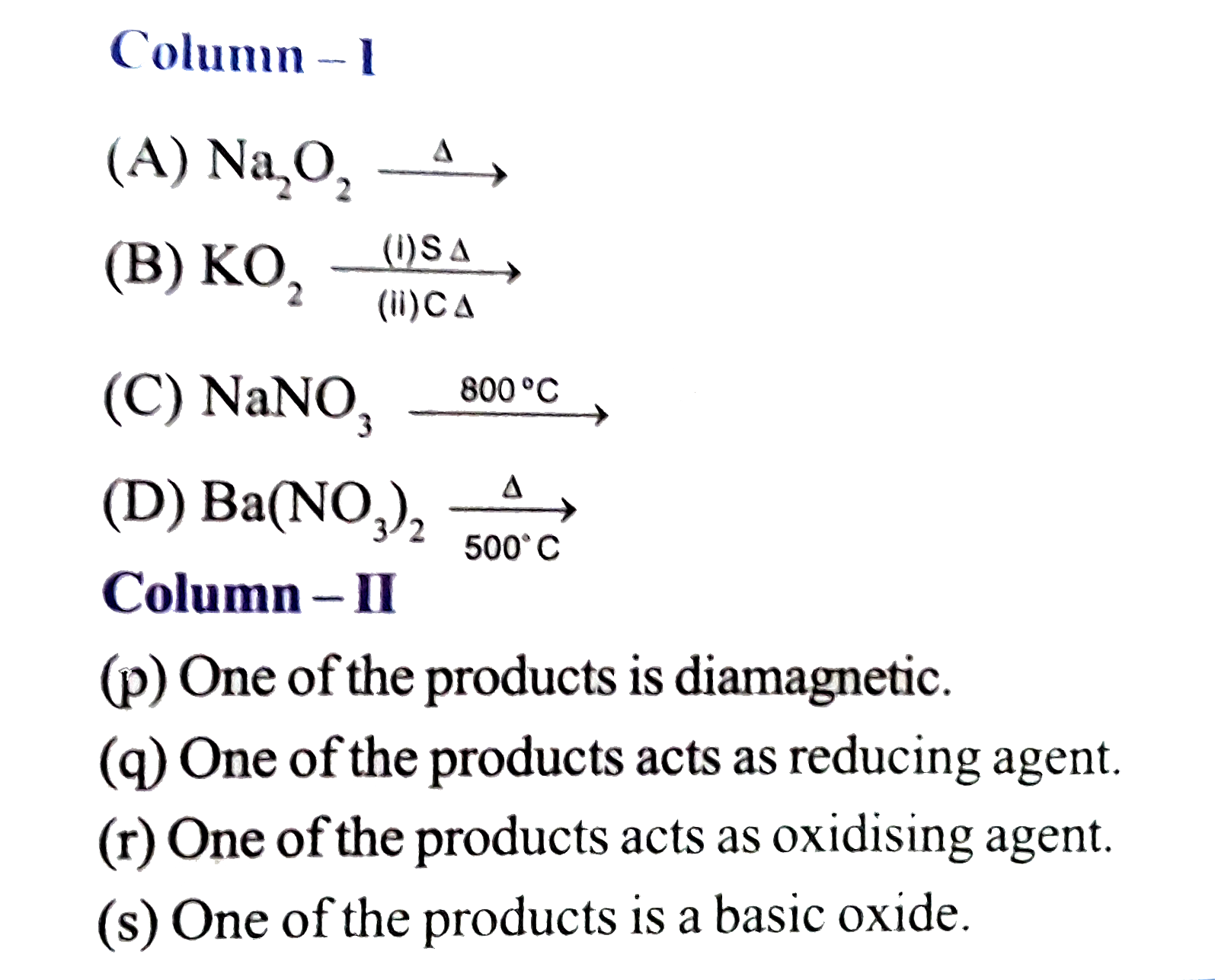 View Solution
View SolutionMatch the molecule in Column I with the characteristic in Column II
 View Solution
View SolutionMatch the reactions listed in column(I) with characteristic(s) of the products/typee of reactions listed in column(II).
 .View Solution
.View SolutionMatch the compounds in Column I with their characteristic test (s) reaction (0s) given in Column II.
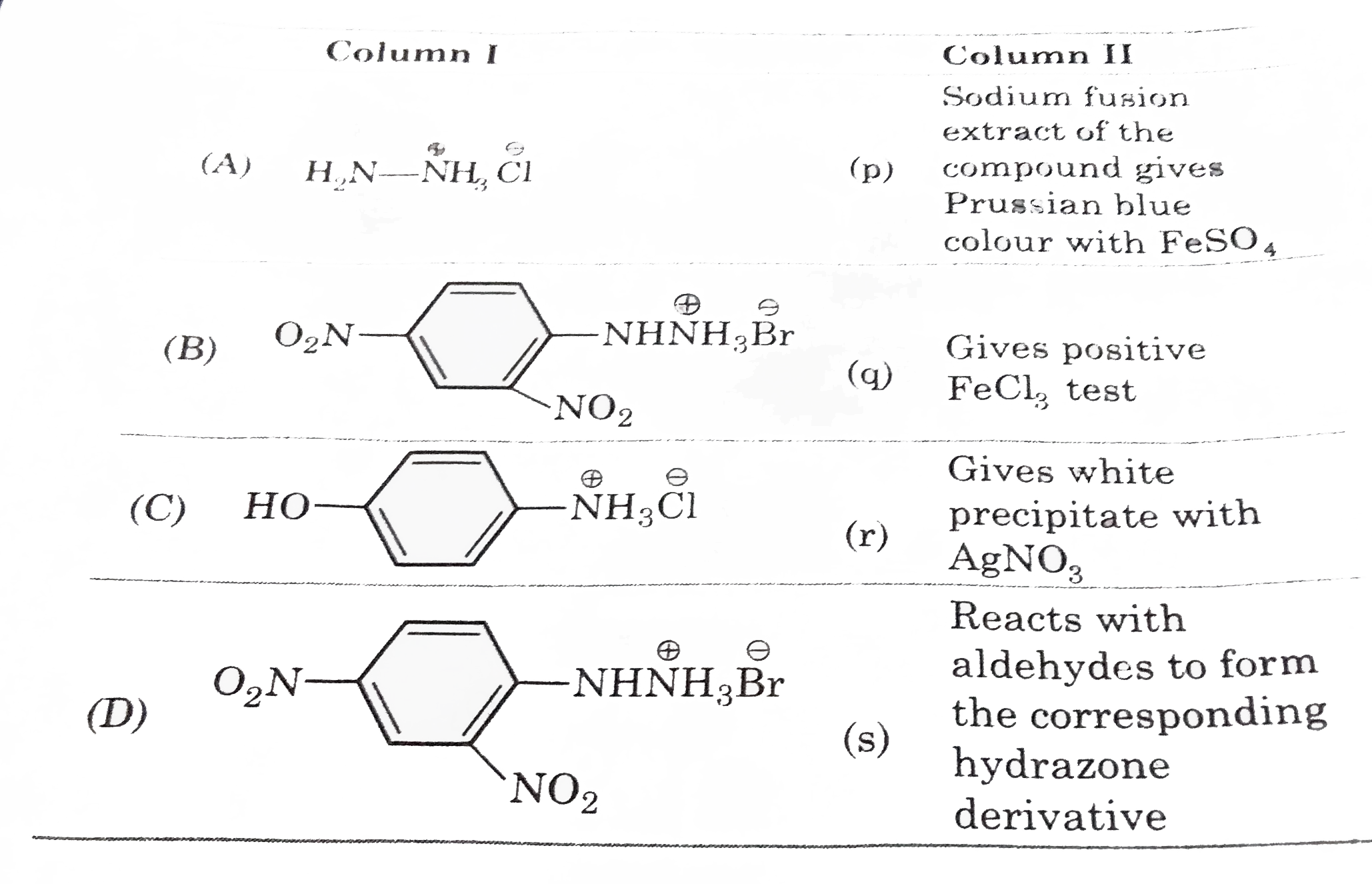 View Solution
View Solution


